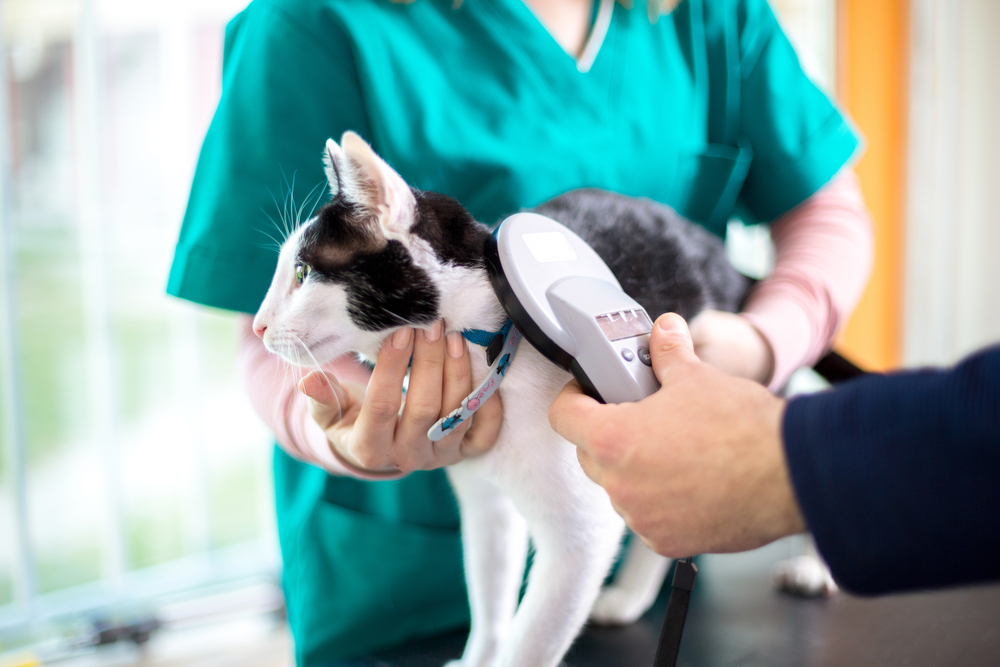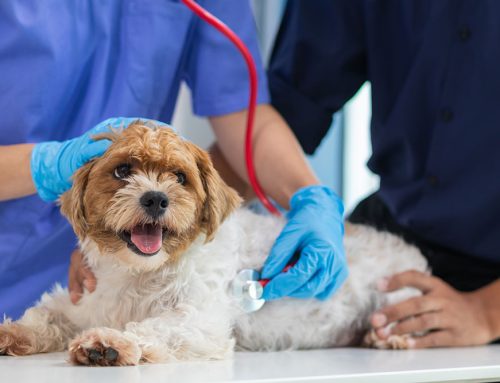Summer is the loudest season of the year, with pop-up thunderstorms, July Fourth fireworks, and motorcycles roaring down the street. Although most pets take these noises in stride, barely blinking an eye, up to 30% of dogs suffer from noise-related fear and anxiety. Does your pet dive under the coffee table when you vacuum, or hide in your bathtub during storms? Noise aversion is a common problem that can cause pets significant anxiety, yet many owners fail to realize the seriousness of the condition. If your pet jumps every time a car backfires, try these seven tips to ease their fears, and ensure their safety.
#1: Create a noise shelter for your pet
Many pets seek out a refuge, such as a closet or bathtub, during storms and fireworks. Although they may help soothe your pet’s fears, create a more appealing safe haven where they can hunker down, such as a corner of an internal room, which will be more insulated from outdoor sounds, and where your pet will not be able to see lightning flashes or fireworks through any windows. Stock the special spot with a cozy bed and a few favorite toys, and take them there when storms threaten to throw them into a panic.
#2: Distract your pet from scary noises
For this tactic to work, you must keep a close eye on the weather forecast, and be informed about local firework displays, because preventing a panic attack is easier than calming your extremely anxious pet. When a storm is approaching, or fireworks are planned, take your pet to their refuge, and divert their attention from the scary situation. Lavish them with attention, pet them, or treat them to a relaxing massage. Fill Kong toys with a mixture of peanut butter and dog food, and freeze them for these occasions. Play music, or turn on the television, to drown out fearsome sounds, so your pet doesn’t realize a storm is brewing.
#3: Desensitize your pet to loud noises
Desensitization takes time and patience, but is the best way to help your pet beat their fears, and have a better quality of life. To help your pet dissociate loud sounds from negative feelings, play thunderstorm or firework sounds softly while you play with your pet, and spoil them with special treats. Do this each day, slowly increasing the volume, to help your pet see that the previously scary sounds are not harmful, and can be associated with positive outcomes. If your pet becomes fearful at any point, reduce the sound to a volume that did not evoke a negative reaction, and progress more slowly.
#4: Wrap your pet in a Thundershirt
Have you heard of swaddling a baby to help them stay calm? Research has shown that constant, gentle pressure triggers the release of calming hormones, such as oxytocin and endorphins. Thundershirts use this natural response to help calm fearful pets in a variety of situations, although they’re best known for their success in helping pets with noise aversion. Thundershirsts fit snugly to apply constant, calming pressure to your pet’s body, and should be put on your pet at the first sign of a storm or fireworks.
#5: Speak with our veterinary team about your pet’s fears
Some pets are so severely affected by noise aversion that they cannot overcome their fears, and cannot be helped with natural remedies. Pets have been known to resort to extreme measures, such as crashing through a window, to escape during a panic attack. We don’t want your pet to suffer, or potentially be hurt, so if other methods aren’t helping, speak with our Liberty Veterinary Hospital team about the possibility of medicating your pet during storms or fireworks. We may be able to prescribe a sedative to help your pet through difficult situations, although these medications work best if administered before your pet gets worked up, so you will still need to closely monitor the weather, and stay on top of local events that could become loud.
#6: Check your pet’s collar and identification tag
You should never leave your pet outside during a thunderstorm or fireworks display, but if your pet bolts after an unexpected loud noise, you want them to have adequate identification. Ensure your pet always wears an identification tag containing your current contact information, and check periodically to ensure the information is readable. Routinely check your pet’s collar for wear or weak spots, to prevent it from breaking, and allowing your pet to escape unidentified.
#7: Have your pet microchipped

Although an identification tag may help a lost pet return home, collars can break or be removed, and identification tags can wear down, and become unreadable. To maximize the chances of a happy reunion, have a microchip implanted as soon as possible. Our veterinary team can microchip your pet during a brief office visit, without sedation or anesthesia, to ensure life-long permanent identification. If your pet is found, a shelter worker can use a hand-held scanner to read the microchip, and see your pet’s unique identification number. Once you register your pet, this number will be linked to your contact information in the national database, and you can be contacted to retrieve your pet.
If your pet suffers from noise aversion, we can help ease their fears, and ensure a better quality of life. Call us to talk about helpful solutions, or to schedule an appointment for microchip implantation.








Leave A Comment